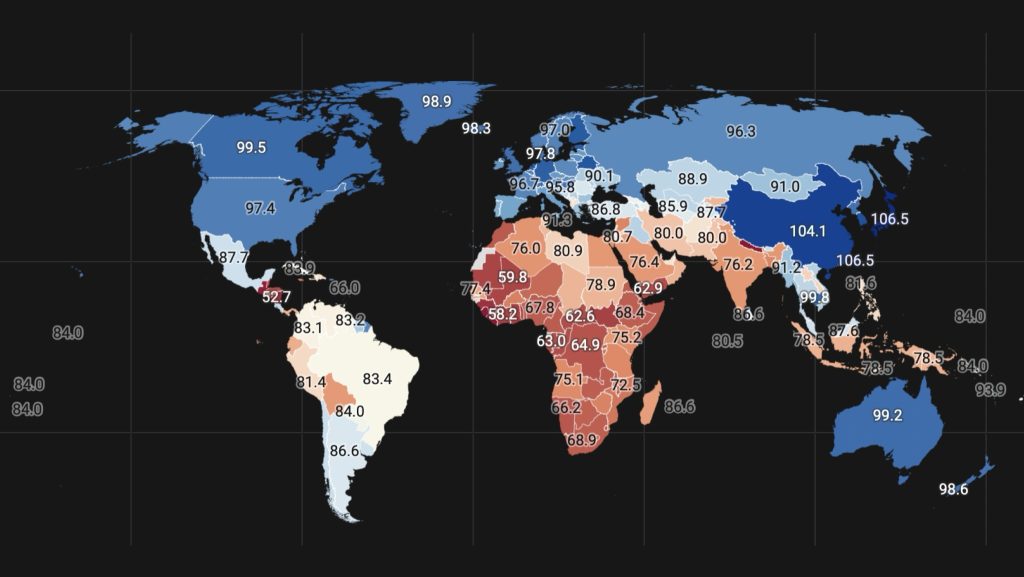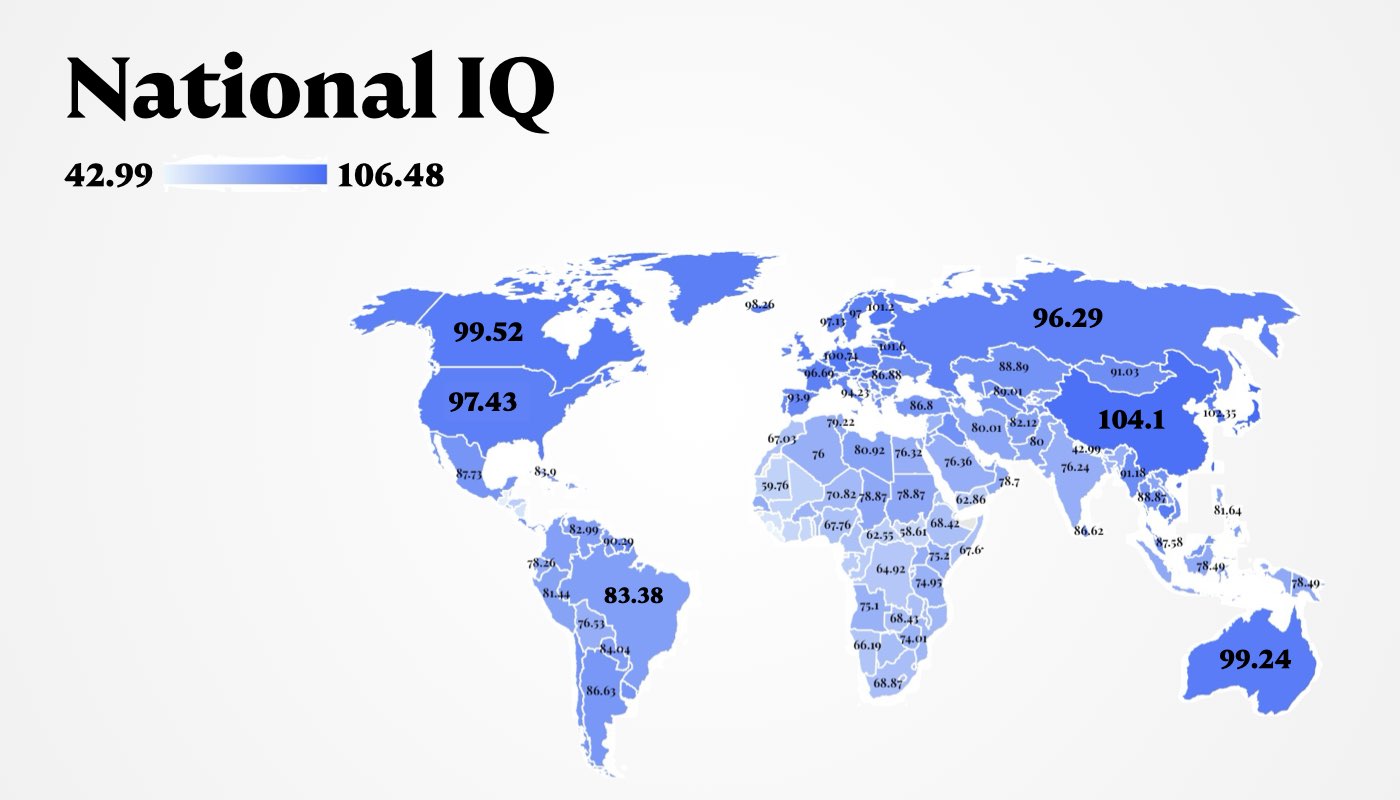A recent study (Francis & Kirkegaard, 2022) suggests that there is not only a correlation but also a causative link from IQ to GDP:
We find national IQ to be the “best predictor” of economic growth, with a higher average coefficient and average posterior inclusion probability than all other tested variables (over 67) in every test run. Our best estimates find a one point increase in IQ is associated with a 7.8% increase in GDP per capita
Francis, Kirkegaard, National Intelligence and Economic Growth: A Bayesian Update (2022)
So far, no reverse effect has been observed where GDP growth leads to an increase in national IQ. It is possible to quickly become wealthy through only oil production, but getting smarter does not happen. Saudi Arabia has an average national IQ of 76 and a decent GDP of ~$23K per capita. The UAE has an average national IQ of 82 and a good ~$44K per capita.
What develops IQ? For example, getting higher education (Stuart J. Ritchie et al., 2018). Each year of higher education can add between 1 to 5 IQ points to a student, and these gains are almost lifelong. For instance, the Republic of Belarus has an average national IQ of 101, with no oil production, but the 33% of its population has a higher education degree. South Korea, officially the Republic of Korea, has an avarage national IQ of 106 — probably because of a fact that 50% of its population has a higher education degree.

Source:
1. National Intelligence and Economic Growth: A Bayesian Update, Francis, Kirkegaard, https://www.researchgate.net/publication/363583751_National_Intelligence_and_Economic_Growth_A_Bayesian_Update
2. National IQ map — https://www.datapandas.org/ranking/average-iq-by-country. This visualization map is based on the data from a report “The Intelligence of Nations” by Richard Lynn and David Becker
3. How Much Does Education Improve Intelligence? A Meta-Analysis, Stuart J. Ritchie et. al., https://journals.sagepub.com/doi/10.1177/0956797618774253







